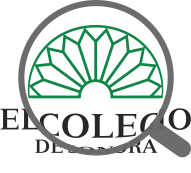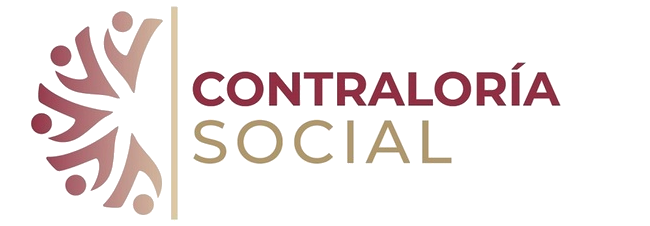| dc.contributor.author | González Ávila, María Eugenia | |
| dc.contributor.author | Arzaluz Solano, María del Socorro | |
| dc.coverage.spatial | MX-SON | en-US |
| dc.creator | GONZALEZ AVILA, MARIA EUGENIA;#0000-0002-5925-0704 | |
| dc.creator | Arzaluz Solano, María del Socorro; 25372 | |
| dc.date | 2011-05-01 | |
| dc.date.accessioned | 2022-06-28T19:42:26Z | |
| dc.date.available | 2022-06-28T19:42:26Z | |
| dc.date.issued | 2011-05-01 | |
| dc.identifier | https://regionysociedad.colson.edu.mx:8086/index.php/rys/article/view/52 | |
| dc.identifier | https://doi.org/10.22198/rys.2011.51.a52 | |
| dc.identifier.uri | https://regionysociedad.colson.edu.mx:8086/index.php/rys/article/view/52 | |
| dc.identifier.uri | https://doi.org/10.22198/rys.2011.51.a52 | |
| dc.identifier.uri | https://repositorio.colson.edu.mx/handle/2012/45509 | |
| dc.description.abstract | This article analyzes the development of the Programa de Cultura del Agua [Water Culture Program] (PCA) applied in four cities in Northeastern Mexico (Acuña, Coahuila; Nuevo Laredo and Reynosa, Tamaulipas; and Monterrey, Nuevo León). The program is hardly effective or efficient in most of the above cities. Nuevo Leon's utility is the most outstanding, since it is based more on the experience and continuity of the people in charge, rather than on quantifiable results. Therefore, it is important to consider this program as a useful tool of Mexican water policy to propagate a water culture which includes measurable indicators to assess the impact and effectiveness on the population in the short, medium and long term, in order to achieve sustainable use, management and conservation of water resources in this and other regions of Mexico. | en-US |
| dc.description.abstract | El Programa de Cultura del Agua, implantado en Acuña, Coahuila; Nuevo Laredo y Reynosa, Tamaulipas, y en Monterrey, Nuevo León, resulta poco eficaz y eficiente en la mayoría de dichas ciudades. El organismo operador de Nuevo León es el más destacado, ya que se basa más en la experiencia y continuidad de los encargados, que en la obtención de resultados cuantificables. Por lo tanto, es importante considerar dicho programa en las políticas hídricas de México, como una herramienta útil para difundir la cultura del agua, donde se incluyan indicadores cuantificables que permitan evaluar su repercusión y efectividad en la población a corto, mediano y largo plazo, a fin de lograr un uso, manejo y conservación sustentable del recurso, en esta y otras regiones de México. | es-ES |
| dc.format | application/pdf | |
| dc.language.iso | spa | |
| dc.publisher | El Colegio de Sonora | es-ES |
| dc.relation | https://regionysociedad.colson.edu.mx:8086/index.php/rys/article/view/52/372 | |
| dc.rights | Derechos de autor 2017 María Eugenia González Ávila, María del Socorro Arzaluz Solano | es-ES |
| dc.rights | https://creativecommons.org/licenses/by-nc/4.0/ | es-ES |
| dc.rights | info:eu-repo/semantics/openAccess | es-ES |
| dc.source | 2448-4849 | |
| dc.source | 1870-3925 | |
| dc.source | región y sociedad; Vol. 23 No. 51 (2011): May-August | en-US |
| dc.source | región y sociedad; Vol. 23 Núm. 51 (2011): mayo-agosto | es-ES |
| dc.subject | Water culture | en-US |
| dc.subject | Water | en-US |
| dc.subject | Utility | en-US |
| dc.subject | Northeast | en-US |
| dc.subject | Sustainable| | en-US |
| dc.subject | Agua | es-ES |
| dc.subject | Cultura del agua | es-ES |
| dc.subject | Organismo operador | es-ES |
| dc.subject | Noreste | es-ES |
| dc.subject | Sustentable | es-ES |
| dc.subject | Ciencias Sociales | |
| dc.subject.lcsh | Water culture | en-US |
| dc.subject.lcsh | Water | en-US |
| dc.subject.lcsh | Utility | en-US |
| dc.subject.lcsh | Northeast | en-US |
| dc.subject.lcsh | Sustainable| | en-US |
| dc.subject.lcsh | Agua | es-ES |
| dc.subject.lcsh | Cultura del agua | es-ES |
| dc.subject.lcsh | Organismo operador | es-ES |
| dc.subject.lcsh | Noreste | es-ES |
| dc.subject.lcsh | Sustentable | es-ES |
| dc.title | El Programa de Cultura del Agua en el noreste de México. ¿Concepto utilitario, herramienta sustentable o requisito administrativo? | es-ES |
| dc.type | info:eu-repo/semantics/article | |
| dc.type | info:eu-repo/semantics/publishedVersion | |
| dc.audience | generalPublic | |
| dc.identificator | 5 | |










